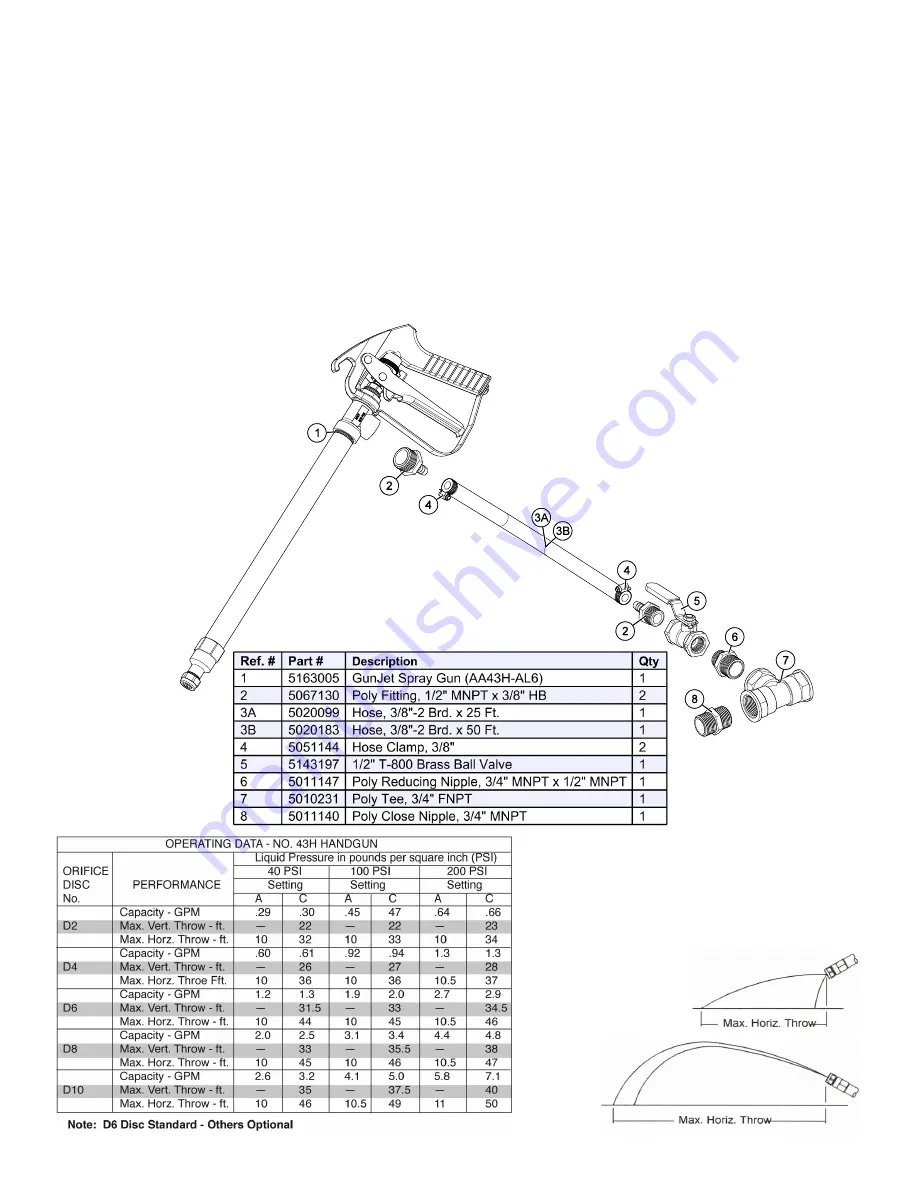
Page 2
Wide Angle
Cone Spray
Straight Stream
Spray
Testing The Sprayer
It is best to test the completed handgun sprayer with plain
water before actually spraying chemicals. This will enable you
to determine if the assembled unit has any plumbing leaks. It
is best to start your handgun sprayer under little or no pres-
sure. After starting the sprayer at low pressure, it is best to
increase pressure in steps to the desired operating pressure.
Conditions of weather and terrain must be considered when
setting the sprayer. Do not spray on windy days. Protective
clothing must be worn in some cases.
Handgun Operation
Squeezing the lever allows the handgun to spray. Adjustable
from a cone pattern to a straight stream pattern.
When spraying with the handgun, pressure may be reduced
by slowly opening your bypass valve until desired pressure is
achieved. Opening the valve decreases pressure, closing the
valve increases pressure.
WARNING:
Some chemicals will damage the plumbing com-
ponents if allowed to soak untreated for a length of time!
ALWAYS flush the system after each use.
If handgun nozzle needs cleaning, remove from the handgun
and soak in warm soapy water. Clean with a soft bristled
brush or toothpick if necessary. Never use a metal object.
Even the slightest damage can change the flow rate and
spray distribution. Water rinse and dry the tips before storing.
Proper care and maintenance will prolong the life of your
sprayer. Follow your sprayer’s maintenance and winter
storage instructions.
Handgun Kits:
‘BB-300’ (5300199) &
‘BB-300-50’ (5300913)
Part 3A is for ‘BB-300’
(5300199)
Part 3B is for ‘BB-300-50’
(5300913)




